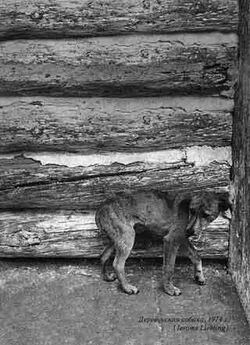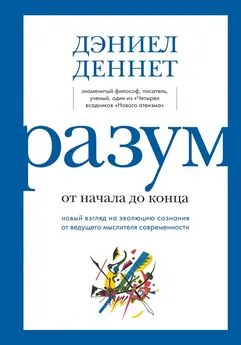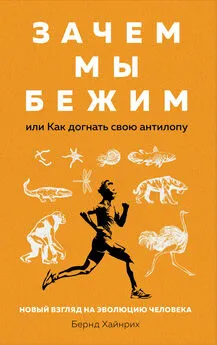Лорна Коппингер - Собаки. Новый взгляд на происхождение, поведение и эволюцию собак
- Название:Собаки. Новый взгляд на происхождение, поведение и эволюцию собак
- Автор:
- Жанр:
- Издательство:«СОФИОН»
- Год:2005
- Город:Москва
- ISBN:5-9668-0006-5
- Рейтинг:
- Избранное:Добавить в избранное
-
Отзывы:
-
Ваша оценка:
Лорна Коппингер - Собаки. Новый взгляд на происхождение, поведение и эволюцию собак краткое содержание
Авторы — супружеская чета Коппингеров — хорошо известны как среди специалистов по поведению животных, так и вне научных кругов — среди тех, кто занимается или интересуется собаками.
В книге обсуждаются:
— место собаки в истории человеческой цивилизации и его изменение в ходе истории от первобытных времен до наших дней;
— происхождение и эволюция собаки с объяснением форм, пород, биологического смысла породоспецифических особенностей;
— формирование специфического поведения собак различных пород с этологической и генетической точек зрения.
Как важное достоинство произведения следует отметить живой язык и своеобразный юмор авторов. Продемонстрировав нетривиальный научный анализ и несомненный литературный талант, авторы создали яркую и интересную книгу.
Предназначено для кинологов, этологов, экологов, антропологов, студентов ветеринарных факультетов и академий, а также для широкого круга читателей.
Собаки. Новый взгляд на происхождение, поведение и эволюцию собак - читать онлайн бесплатно полную версию (весь текст целиком)
Интервал:
Закладка:
39. Parsons, Peter A. 1997. Stress-resistance genotypes, metabolic efficiency and interpreting evolutionary change. In Environmental Stress, Adaptation and Evolution, edited by R. Bijlsma and V. Loeschcke. Boston: Birkhauser.
40. Price, Edward O. 1998. Behavioral genetics and the process of animal domestication. In Genetics and the Behavior of Domestic Animals, edited by Temple Grandin. San Diego: Academic Press.
41. Scott, John Paul. 1968. Evolution and domestication of the dog. Evolutionary Biology 2: 243—75.
42. Scott, John R. 1959. The inheritance of annual breeding cycles in hybrid basenji-cocker spaniel dogs. The Journal of Heredity, 255—61.
43. Smith, Charles K. 1970. Logical and persuasive structures in Charles Darwin's prose style. Language and Style, Fall: 243—73.
44. Trut, Lyudmila N. 1999. Early canid domestication: the farm-fox experiment. American Scientist, March-April, 160—69.
45. Woolpy, Jerome H., and Benson E. Ginsburg. 1967. Wolf socialization: A study of temperament in a wild social species. American Zoologist 7: 357—63.
46. Zeuner, Frederick E. 1963. A History of Domesticated Animals. New York and Evanston: Harper and Row.
47. Zimen, Erik. 1981. The Wolf: A Species in Danger. New York: Delacorte Press.
— 1999. An animal changes the world: the domestication of the wolf. Paper read at Wolf amp; Co. international Symposium on Canids, at Cologne, Germany.
Глава 2
48. Beck, Alan M. 1973. The Ecology of Stray Dogs: a Study of Free-ranging Urban Animals. Baltimore: York Press.
49. Bekoff, M. 1977. Mammalian dispersal and the ontogeny of individual behavioural phenotypes. American Naturalist 111: 715—32.
50. Blunder, Mark, and Roger Byrne. 1991. The ecological genetics of domestication and the origins of agriculture. Current Anthropology 32 (1): 23—54.
51. Boitani, Luigi, Francesco Francisci, Paolo Ciucci, and Giorgio Andreoli. 1995. Population biology and ecology of feral dogs in central Italy. In The Domestic Dog: Its Evolution, Behaviour, and Interactions with People, edited by J. Serpell. Cambridge, UK: Cambridge University Press.
52. Carr, G.M., and D.W. Macdonald. 1986. The sociality of solitary foragers: A model based on resource dispersion. Animal Behaviour 35: 1540—49.
53. Corbett, Laurie. 1995. The Dingo in Australia and Asia. Ithaca: Comstock/Cornell.
54. Daniels, Thomas J. 1983. The social organization of free-ranging urban dogs. I. Nonestrous social behavior. Applied Animal Ethology 10: 341—63.
55. Daniels, Thomas J., and Marc Bekoff. 1989a. Population and social biology of free-ranging dogs, Canis familiaris. Journal of Mammalogy 70 (4): 754—62.
— 1989b. Spatial and temporal resource use by feral and abandoned dogs. Ethology 81: 300—312.
56. Feldmann, Bruce. 1974. The problem with urban dogs. Science 185 (4155): 3.
57. Frank, H., and M.G. Frank. 1982. On the effects of domestication on canine social development and behavior. Applied Animal Ethology 8: 507—25.
58. Lands, Margaret. 1981. Zoonotic diseases in the Canadian and Alaskan North. Inuit Studies 5 (2): 83—107.
59. Macdonald, David W., and Geoff M. Carr. 1995. Variation in dog society: Between resource dispersion and social flux. In The Domestic Dog: Its Evolution, Behaviour, and Interactions with People, edited by J. Serpell. Cambridge, UK: Cambridge University Press.
60. Plyusnina, I.Z., and L.N. Trut. 1991. An analysis of fear and aggression during early development of behavior in silver foxes (Vulpes vulpes). Applied Animal Behaviour Science 32: 253—68.
61. Yeager, Rodger, and Norman N. Miller. 1986. Wildlife, Wild Death. Edited by L.W. Milbrath, SUNY Series in Environmental Public Policy. Albany, N.Y. State University of New York.
Глава 3
62. Ash, Edward С. 1972 [1927]. Dogs: Their History and Development. Reissue ed. Two vols. New York: Benjamin Blom.
63. Brisbin, I. Lehr. 1977. The pariah: Its ecology and importance to the origin, development and study of pure bred dogs. Pure Bred Dogs: American Kennel Club Gazette, January, 27—29.
64. Glutton-Brock, Juliet. 1977. Man-made dogs. Science 197: 1340—1342.
65. Coppinger, Raymond, and Richard Schneider. 1995. Evolution of working dogs. In The Domestic Dog: Its Evolution, Behaviour, and Interactions with People, edited by J. Serpell. Cambridge, UK: Cambridge University Press.
66. Coppinger, Raymond, and Lorna Coppinger. 1998. Differences in the behavior of dog breeds. In Genetics and the Behavior of Domestic Animals, edited by Temple Grandin. San Diego: Academic Press.
67. Das, Gautam. 1998. Notes on the Indian «Pariah» dog (Indian Spitz) as a hunting dog. Merigal, October, 12—13.
68. Meyrick, John. 1861. House Dogs and Sporting Dogs: Their Varieties, Points, Management, Training, Breeding, Rearing and Diseases. London: John Van Voorst.
69. Stonehenge. 1872. The Dog in Health and Disease. Second edition. London: Longmans, Green, Reader, and Dyer.
70. Titcomb, M. 1969. Dogs and man in the ancient Pacific with special attention to Hawaii. Special Publication 59, Bernice P. Bishop Museum, Honolulu, Hawaii.
Глава 4
71. Andelt, William F. 1992. Effectiveness of livestock guarding dogs for reducing predation on domestic sheep. Wildlife Society Bulletin 20: 55—62.
72. Bailey, Ed. 1997/98. The fearful dog. Gun Dog, December/January, 41—44. — 1998. Another look at the 49th day. Gun Dog, April/May, 20—24.
— 1999. Giving pups a head start. Gun Dog, April/May, 24—27.
73. Bateson, Gregory. 1972. Metalogue: What is an instinct? In Steps to an Ecology of Mind. New York: Ballantine Books.
74. Bateson, Patrick. 1979. How do sensitive periods arise and what are they for? Animal Behaviour 27: 470—86.
75. Black, Hal L. 1981. Navajo sheep and goat guarding dogs: A new world solution to the coyote problem. Rangelands 3 (6): 235—38.
76. Black, H.L., and J.S. Green. 1985. Navajo use of mixed-breed dogs for management of predators. Journal of Range Management 38: 11—15.
77. Cairns, Robert B. 1966. Development, maintenance and extinction of social attachment behavior in sheep. Journal of Comparative and Physiological Psychology 62 (2): 298—306.
78. Cairns, Robert В., and Donald L. Johnson. 1965. The development of interspecies social attachments. Psychonometric Science 2: 337—38.
79. Cairns, Robert В., and Jack Werboff. 1967. Behavior development in the dog: An interspecific analysis. Science 158: 1070—72.
80. Cooper, R.M., and John R. Zubek. 1958. Effects of enriched and restricted early environments on the learning ability of bright and dull rats. Canadian Journal of Psychology 12 (3): 159—64.
81. Coppinger, L., and R. Coppinger. 1993. Dogs for herding and guarding livestock. In Livestock Handling and Transport, edited by T. Grandin. Wallingford, Oxford, UK: CAB International.
82. Coppinger, Raymond, Lorna Coppinger, Gail Langeloh, Lori Gettler, and Jay Lorenz. 1988. A decade of use of livestock guarding dogs. In Proceedings of the Vertebrate Pest Conference, edited by A.C. Crabb and R.E. Marsh. Davis, CA: University of California.
83. Cornwell, Anne C, and John L. Fuller. 1961. Conditioned responses in young puppies. Journal of Comparative and Physiological Psychology 54 (1): 13—15.
84. Cronly-Dillon, John. 1982. The experience that shapes our brains. New Scientist, November, 366—69.
85. Elliot, Orville, and J.R. Scott. 1961. The development of emotional distress reactions to separation in puppies. The Journal of Genetic Psychology 99: 3—32.
86. Fairfax, Harrison, ed. 1913 Roman Farm Management: The Treatises of Cato and Varro Done into English, with Notes of Modern Instances, by a Viginia Farmer. New York: Macmillan.
87. Leyhausen, Paul. 1973. On the function of the relative hierarchy of moods. In Motivation of Human and Animal Behavior: An Ethological View, edited by K. Lorenz and P. Leyhausen. New York: Van Nostrand Reinhold.
88. Markowitz, Tim M., Martin R. Dally, Karin Gursky, and Edward Price. 1998. Early handling increases lamb affinity for humans. Animal Behaviour 55: 573—87.
89. Pfaffenberger, Clarence J. 1963. The New Knowledge of Dog Behavior. New York: Howell Book House.
90. Scott, J.R, and Mary Vesta Marston. Critical periods affecting the development of normal and mal-adjustive behavior in puppies. Journal of Genetics and Psychology 77: 25ff
91. Wahlsten, Douglas. 1990. Insensitivity of the analysis of variance to heredity-environment interaction. Behavioral and Brain Sciences 13 (1): 109—20.
Глава 5
92. Adelman, Steven, Richard Taylor, and Norman Heglund. 1975. Sweating on paws and palms: What is its function? American Journal of Physiology 229 (5): 1400—02.
93. Baker, M.A., and L.W. Chapman. 1977. Rapid brain cooling in exercising dogs. Science 195: 781—83.
94. Coppinger, Lorna. 1977. The World of Sled Dogs. New York: Howeli Book House.
95. Coppinger, Ray, and Carleton Phillips. 1981. Temperature regulations in running sled dogs. Team and Trail, May, 10—12.
96. Fox, M.W., and J.W. Spencer. 1969. Exploratory behavior in the dog: experiential or age dependent? Developmental Psychobioiogy 2 (2): 68—74.
97. Lantis, Margaret. 1980. Changes in the Alaskan Eskimo relation of man to dog and their effect on two human diseases. Arctic Anthropology 17 (1): 2—24.
98. Lawton, Terry Lee. 1975. A biomechanical analysis of an Alaskan husky sled dog racing team. Doctorate, Exercise Science, University of Massachusetts, Amherst.
99. MacRury, Ian Kenneth. 1991. The Inuit dog: Its provenance, environment and history.
Master of Philosophy, Scott Polar Research Institute, University of Cambridge, Darwin College, Cambridge, UK.
100. Paulsen, Gary. 1994. Winterdance: The Fine Madness of Running the Iditarod. San Diego: Harcourt Brace.
101. Phillips, CarletonJ., Raymond Coppinger, and David Schimel. 1981. Hyperthermia in running sled dogs. Journal of Applied Phsysiology: Respiratory, Environmental and Exercise Physiology 51 (1): 135—42.
102. Sands, Michael W., Raymond P. Coppinger, and Carleton J. Phillips. 1977. Comparisons of thermal sweating and histology of sweat glands of selected canids. Journal of Mammalogy 58 (1): 74—78.
103. Schmidt-Nielsen, Knut, William Bretz, and Richard Taylor. 1970. Panting in dogs: Unidirectional air flow over evaporative surfaces. Science 169: 1102—04.
104. Taylor, С.R., Knut Schmidt-Nielsen, Razi Dmi'el, and Michael Fedak. 1971. Effect of hyperthermia on heat balance during running in the African hunting dog. American Journal of Physiology 220 (3): 823—27.
Глава 6
105. Arons, Cynthia D., and William J. Shoemaker. 1992. The distribution of catecholamines and? — endorphin in the brains of three behaviorally distinct breeds of dogs and their F-l hybrids. Brain Research 594: 31—39.
106. Bekoff, Marc. 1974. Social play and play-soliciting by infant canids. American Zoologist 14: 323—40.
— 1989. Social play and physical training: when «not enough» may be plenty. Ethology 80: 330—33.
107. Bekoff, Marc, Harriet L. Hill, and Jeffry Mitton. 1975. Behavioral taxonomy in canids by discriminant function analyses. Science 190: 1223—24.
108. Bleicher, Norman. 1962. Behavior of the bitch during parturition. Journal of the American Veterinary Medical Association 140 (10). i076—82.
— 1963. Physical and behavioral analysis of dog vocalizations. American Journal of Veterinary Research 224 (100): 415—26.
109. Boissy, Alain. 1998. Fear and fearfulness in determining behavior. In Genetics and the Behavior of Domestic Animals, edited by T. Grandin. San Diego: Academic Press.
Читать дальшеИнтервал:
Закладка:







![Берндт Хайнрих - Зачем мы бежим, или Как догнать свою антилопу [Новый взгляд на эволюцию человека] [litres]](/books/1057566/berndt-hajnrih-zachem-my-bezhim-ili-kak-dognat-svo.webp)


